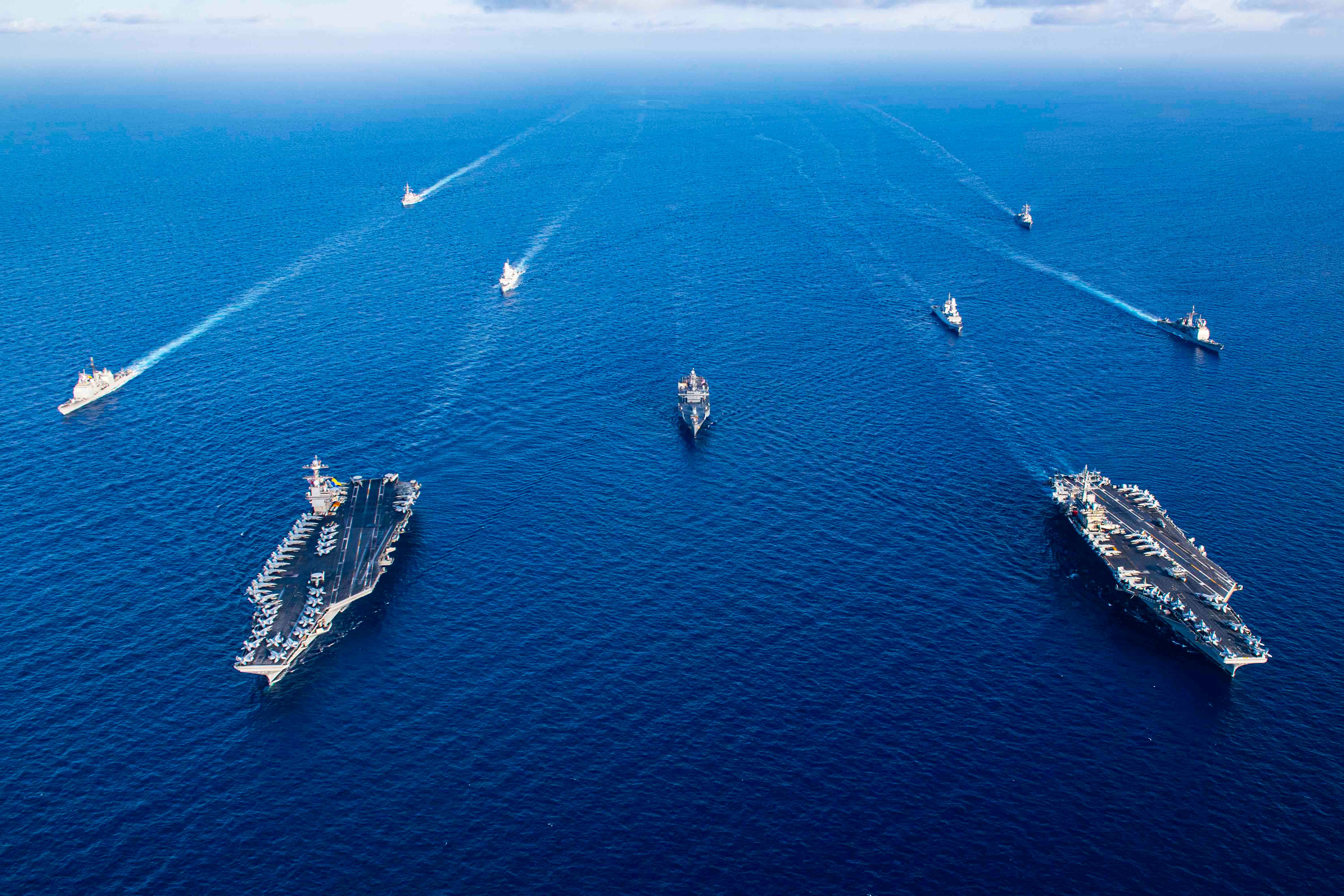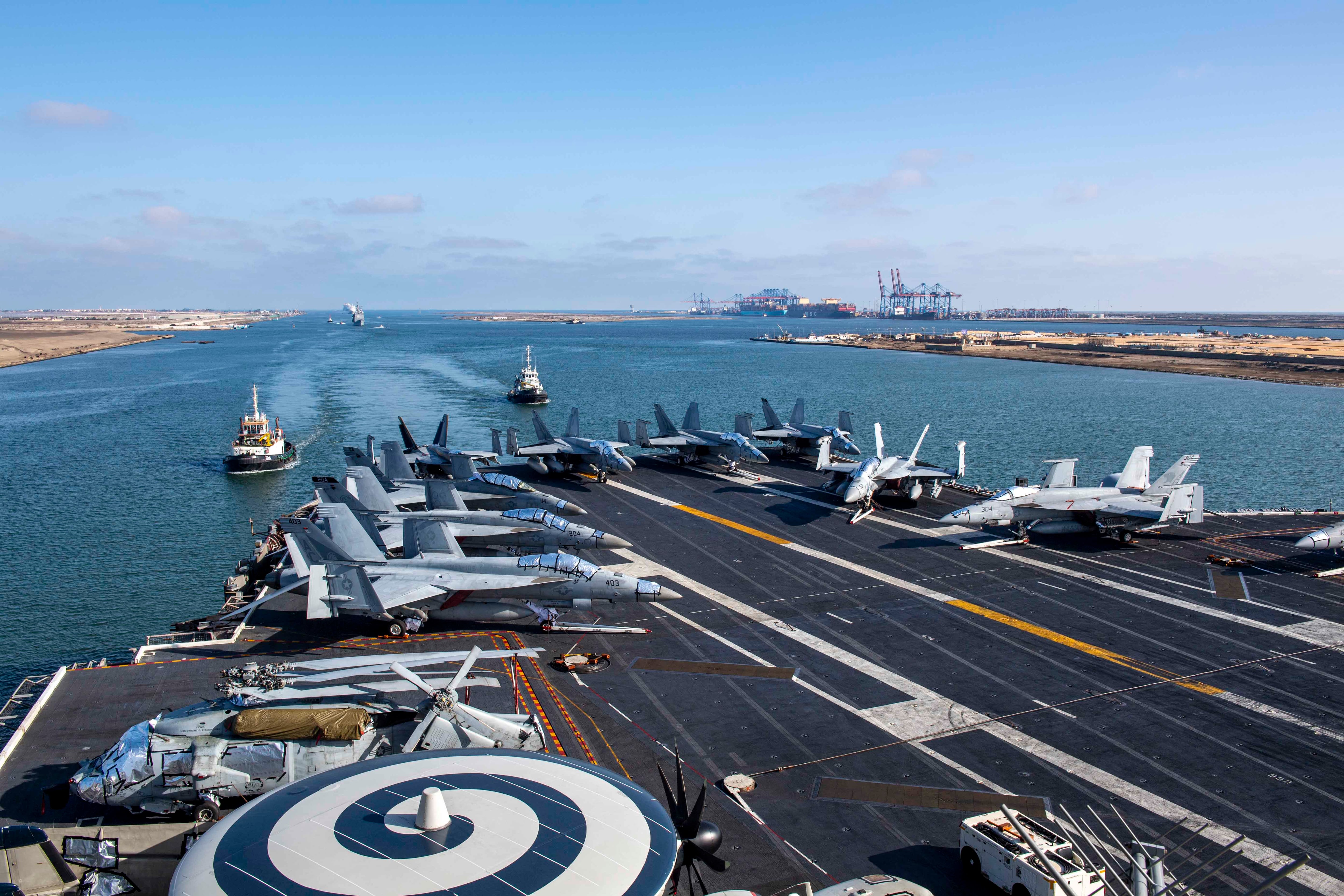The aircraft carrier Dwight D. Eisenhower and its strike group, as well as an Ohio-class submarine, have entered the Middle Eastern waters of U.S. Central Command as concerns continue about a larger conflict erupting in the region as Israel’s war with Hamas grinds on.
Ike’s arrival also comes amid continued attacks on U.S. forces in Iraq and Syria that Pentagon officials have blamed on Iran-backed proxies.
Eisenhower transited the Suez Canal and entered the Red Sea on Saturday, according to U.S. Naval Forces Central Command.
The Eisenhower’s presence in the region marks the first time a carrier has operated in Central Command’s area of responsibility since the end of the Afghanistan war in 2021.
“The arrival of [the Ike Carrier Strike Group] to Middle East region displays our speed and agility to flex as our nation’s leaders determined a balance of maritime capability in support of national security priorities,” Rear Adm. Marc Miguez, commander of Carrier Strike Group 2, said in a Navy news release. “The strike group brings an unparalleled combat superiority to CENTCOM and we will be leveraging our presence in the theater to enhance regional security and operate alongside our allies and partners.”
RELATED

Additionally, CENTCOM issued a rare announcement on X, formerly known as Twitter, that an Ohio-class submarine entered its waters on Sunday, although it did not disclose the name of the submarine.
“The submarine’s rapid deployment in the U.S. Central Command area of responsibility demonstrates flexibility and dynamic ability to deter potential adversaries, reassure partners, enhanced maritime security, and ensure freedom of navigation and the free flow of commerce,” the Navy said in a news release Monday.
On November 5, 2023, an Ohio-class submarine arrived in the U.S. Central Command area of responsibility. pic.twitter.com/iDgUFp4enp
— U.S. Central Command (@CENTCOM) November 5, 2023
CENTCOM did not provide additional details, although it did include an image of a submarine appearing to transit the Suez Canal.
The U.S. has a total of 18 Ohio-class submarines, including four guided-missile submarines outfitted with 154 Tomahawk missiles.
The Ike, originally slated to deploy to the European theater this fall, departed its homeport in Norfolk, Virginia, on Oct. 14.
The Pentagon announced Oct. 21 that Eisenhower would head to the Middle East, days after Navy destroyer Carney intercepted cruise missiles and drones that U.S. officials attributed to Iran-allied Houthi rebel forces in Yemen fired, and following attacks on U.S. troops in Iraq and Syria.
Prior to arriving in the Middle East, Ike operated last week in the Eastern Mediterranean Sea, along with other U.S. assets including the Gerald R. Ford Carrier Strike Group and the U.S. 6th Fleet flagship Mount Whitney.
The Navy said Friday more than 11,000 U.S. personnel participated in the dual-carrier exercises between the Ford and Eisenhower, with the ships conducting “high-value unit defense, ballistic missile defense, replenishments-at-sea, cross-deck flight operations and maritime security operations” alongside Mount Whitney and two Italian frigates.
The Eisenhower’s carrier strike group includes the destroyers Mason and Gravely, cruiser Philippine Sea and Carrier Air Wing 3.
The naval forces join other U.S. assets that have entered the region following the Palestinian militant group Hamas’ Oct. 7 attack on Israel. Those assets include Air Force F-15s, F-16s and A-10 fighter aircraft.
U.S. officials have issued stern warnings to Iran-backed proxy forces to not enter the fray, and Secretary of Defense Lloyd Austin reiterated a commitment to “deter any state or non-state actor seeking to escalate this conflict,” in a call with Israeli Minister of Defense Yoav Gallant on Sunday, the Pentagon said.




